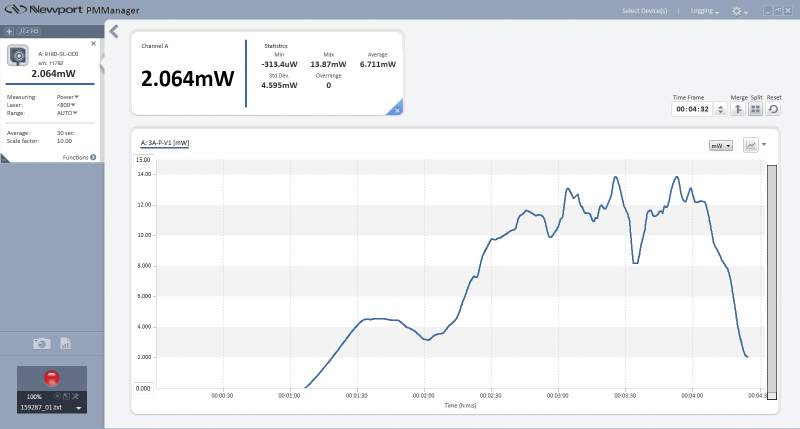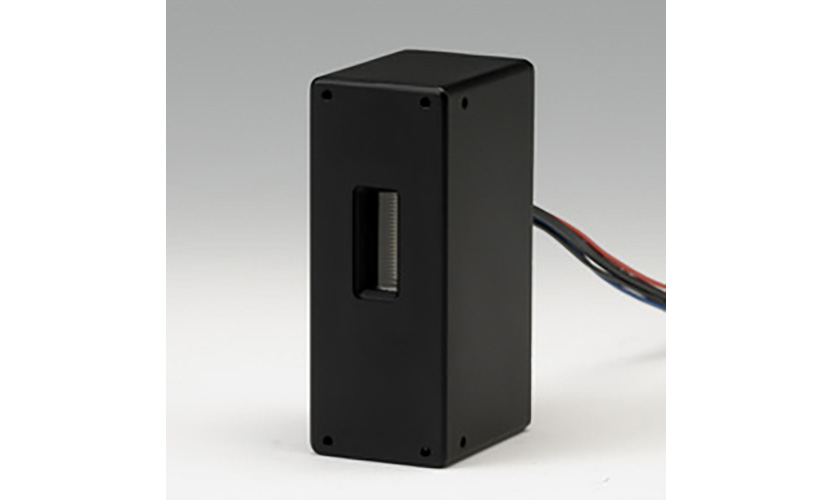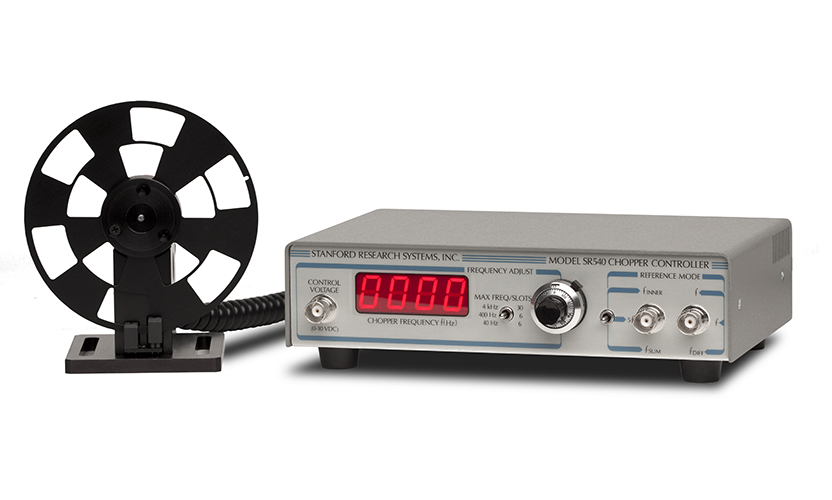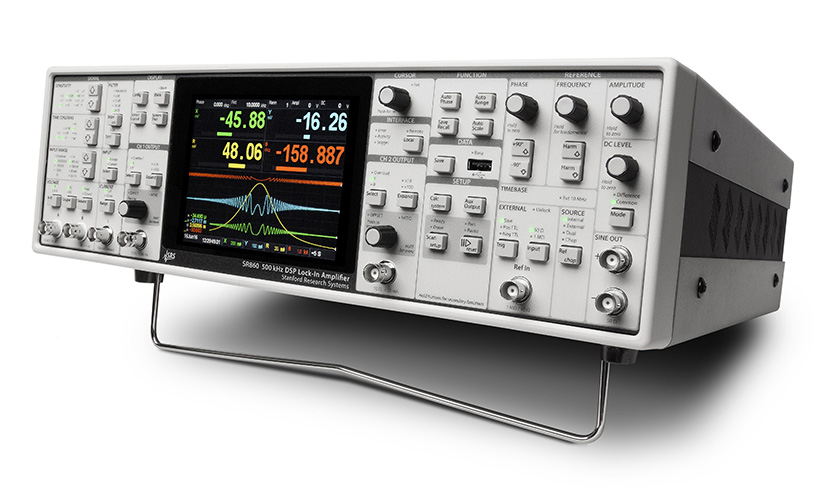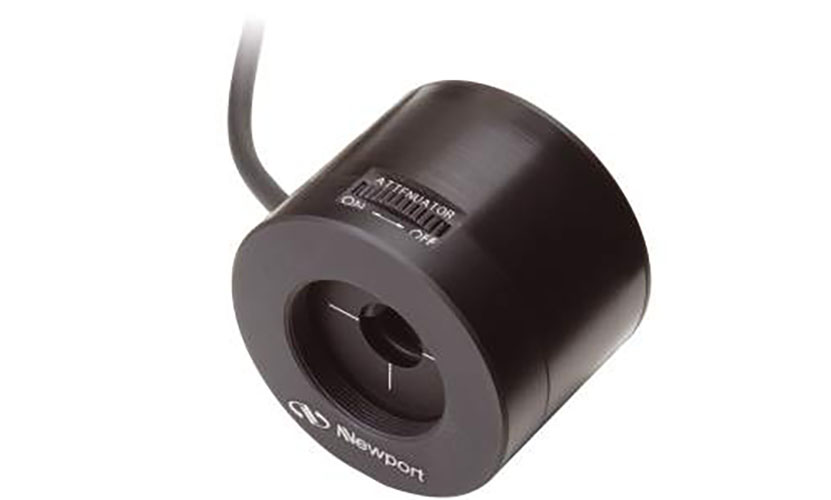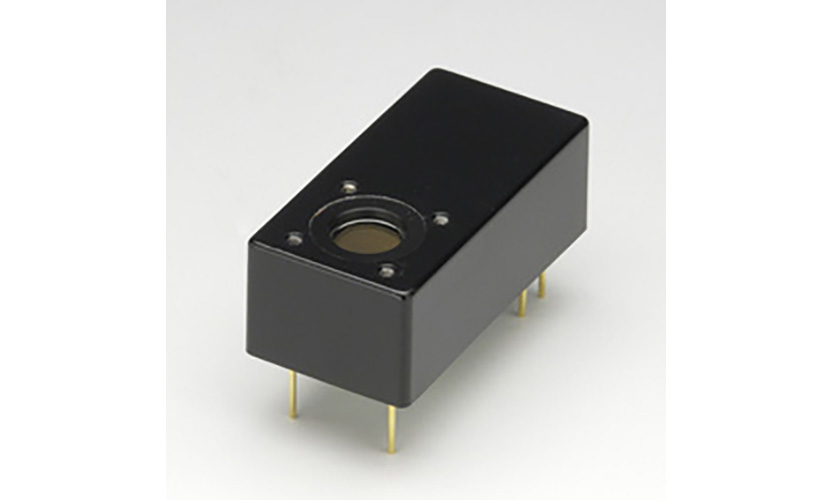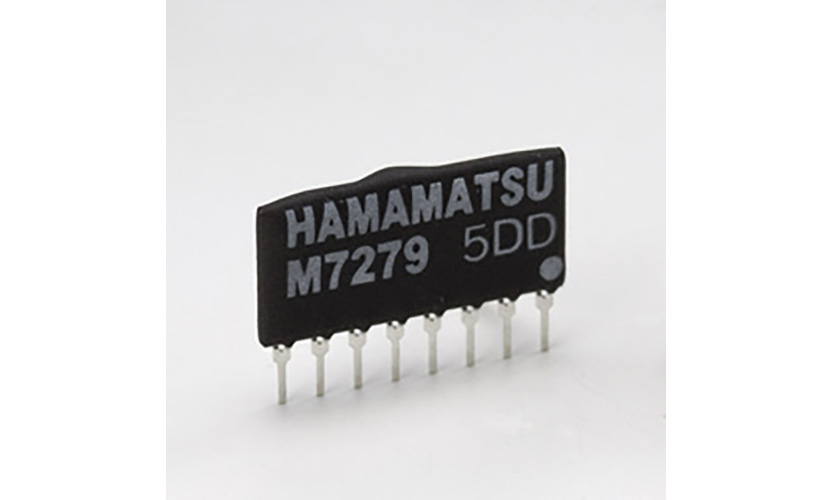Product Model
| model number | name (of a thing) |
| 1938-R1938-R | Advanced Optical Power Meter, Benchtop, Single Channel |
| 2938-R2938-R | Advanced Optical Power Meter, Benchtop, Dual Channel |
Product Specification
| bandwidths | Up to 200 kHz | Display Type | 7 in. TFT LCD (1024×600) Touchscreen |
| measuring rate | Up to 10 kHz | LCD Backlight | LED, user adjustable brightness |
| Compatible Detectors | Photodiode: 918D, 818DB, 819C/D, 818-MSCOPE; Thermopile: 919P, PEPS; Pyroelectric: 919E, LIAD |
Photodiode Measurement | Power, exposure, low frequency power, fast power, amps |
| Detector connectors | 15-pin D-Sub type Male | Thermopile Measurement | Average power, single shot energy, pulsed power |
| Detector Input | Photodiode & Thermopile: 8nA - 25mA full scale in 20 ranges; Pyroelectric: 0 - 5V full scale |
Thermoelectric Measurement | Pulse energy (every pulse up to 25 kHz), average power, exposure |
| sampling frequency | Photodiode: 10 kHz fast-mode, 15 Hz slow-mode; Thermopile: 15 Hz; Pyroelectric: 25 kHz |
Power Requirements | ~100-240V AC 50-60Hz, Max 40 W |
| Gain Range | 10 decades | sizes | 216 x 296 x 147 mm |
| Analog Output Connector | BNC socket | weights | 2.8 kg |
| analog output | User selected 1, 2, 5, or 10 V full-scale, 0.03% resolution, 100Ω impedance | operating temperature | 5 to 40°C, <70% RH |
| data storage | 2 GB internal memory, External storage defined by user supplied flash drive (USB A) | CE | Compliant |
| computer interface | Ethernet, USB B, RS-232 |
hallmark
The most advanced optical power and energy meter on the market
The new 1938-R and 2938-R power meters inherit most of the advanced features from the x936-R series and have been redesigned with the latest CPUs, touchscreens, Android operating systems, and high bandwidth electronic boards. The new power meters are among the most powerful, fastest and versatile on the market. The beautifully designed user interface enables unprecedented measurement speeds and a variety of graphical and digital displays of data.

Ideal for high-speed, modulated light measurements
Depending on the range, the x938-R Power Meter provides up to 200 kHz bandwidth for the 818, 918D, or 819C/D series photodiode detectors. It allows time-stamped data logging to on-board memory or external USB memory at rates up to 10 kHz, revealing more detailed information about the characteristics of the light source. To take full advantage of high-bandwidth operation, the x938-R has an analog output where the raw signal can be sent directly to an oscilloscope or DAQ (data acquisition) board. In addition, when connected to a 919E series pyroelectric sensor, each single pulse up to 25 kHz can be recorded.
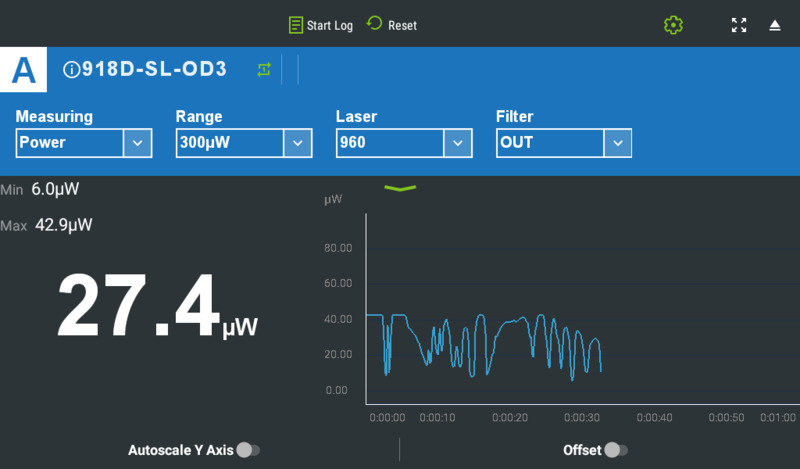
Time-stamped data acquisition up to 10 kHz
While the x936-R's 10 kHz data measurement rate is already impressive, the new x938-R Optical Power Meter improves upon it by adding a timestamp to the data so you know exactly when the measurement was taken. Log files can be easily set up and recorded in the 2 GB on-board memory or on a USB thumb drive. Once a log file is created, text data or graphic files can be viewed within the instrument.
Full-color 7-inch touchscreen with intuitive user interface
The 1024 x 600 pixel high-brightness, full-color 7-inch touchscreen provides the feel of using a tablet PC, putting menu operations at your fingertips. With a clear, easy-to-read display, the wide selection of information and graphs is visually appealing and easy to read even from a distance, making the instrument even more helpful in complex measurement situations. The user interface is beautifully designed so that advanced functions such as advanced graphics, math functions, offsets, scaling, laser tuning, and logging can be easily accessed and used during measurements and experiments.
Seven analog filters and multiple averaging settings
With seven analog filters ranging from 0.5 Hz to 250 kHz, and an averaging function that ranges from a one-second to one-hour moving average, you can configure the Power Meter as a source of stable average power measurements of continuous-wave light, fast tracking of rapidly changing optical power levels, or peak-to-peak measurements of modulated signals. Analog filters are electronic low-pass filters used to eliminate high-frequency noise, while averaging allows data to be smoothed by applying a moving average of the acquired data. By adjusting these settings, stable power measurements can be made while the beam is modulated.
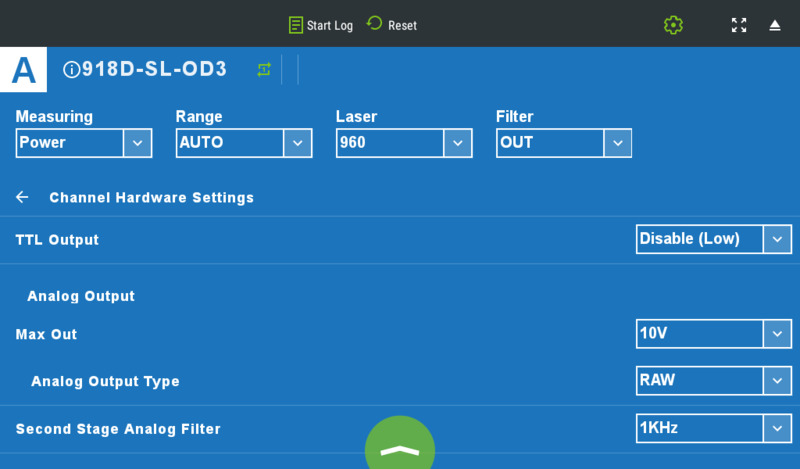
Trigger inputs and TTL outputs for synchronized measurements
The X938-R Power and Energy Meters are equipped with Trigger In and TTL Out connectors for synchronized measurements. Trigger In can be an external TTL signal, a button available to the meter, or a computer command. The TTL output outputs 0 V or 5 V to send the status of the current measurement to the device connected via the TTL output. It can also be set to generate an output if the meter encounters an error, such as an over-range or saturated power reading.
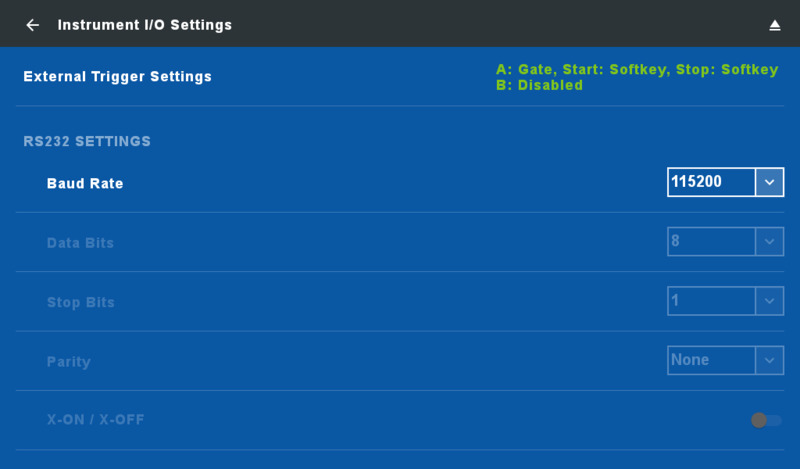
Multiple communication and signal output modes
For computer communication, USB and RS-232 (maximum baud rate 115,200) can be used. In future developments, Wi-fi and Ethernet will also be introduced, giving the user more options for computer control of the instrument. In addition to the previously mentioned trigger inputs and TTL outputs, a fast analog output directly from the analog board allows the power meter to provide full bandwidth.
Multiple background colors and language support
With the new 1938-R and 2938-R Advanced Optical Power and Energy Meters, you can set a variety of background colors and the intensity level that best suits the laser safety goggles you wear. You can also choose from nine languages for operation, including English, Chinese, German, Korean, Spanish, French, Japanese, Italian and Russian.
PMManager™ application software
PMManager™ is a powerful software application for controlling and acquiring measurement data. It turns a PC into a laser power multi-channel analysis workstation. PMManager software features include extensive graphical display of data, advanced measurement processing, data logging for future review, printing of graphs and data, and the ability to connect to other equipment during active measurements. The PMManager software package includes an up-to-date PMManager User's Manual, a COM Objects Manual, a list of available user commands, and automation examples written in a variety of programming languages. See the PMManager Tutorial for more detailed information on its capabilities.
